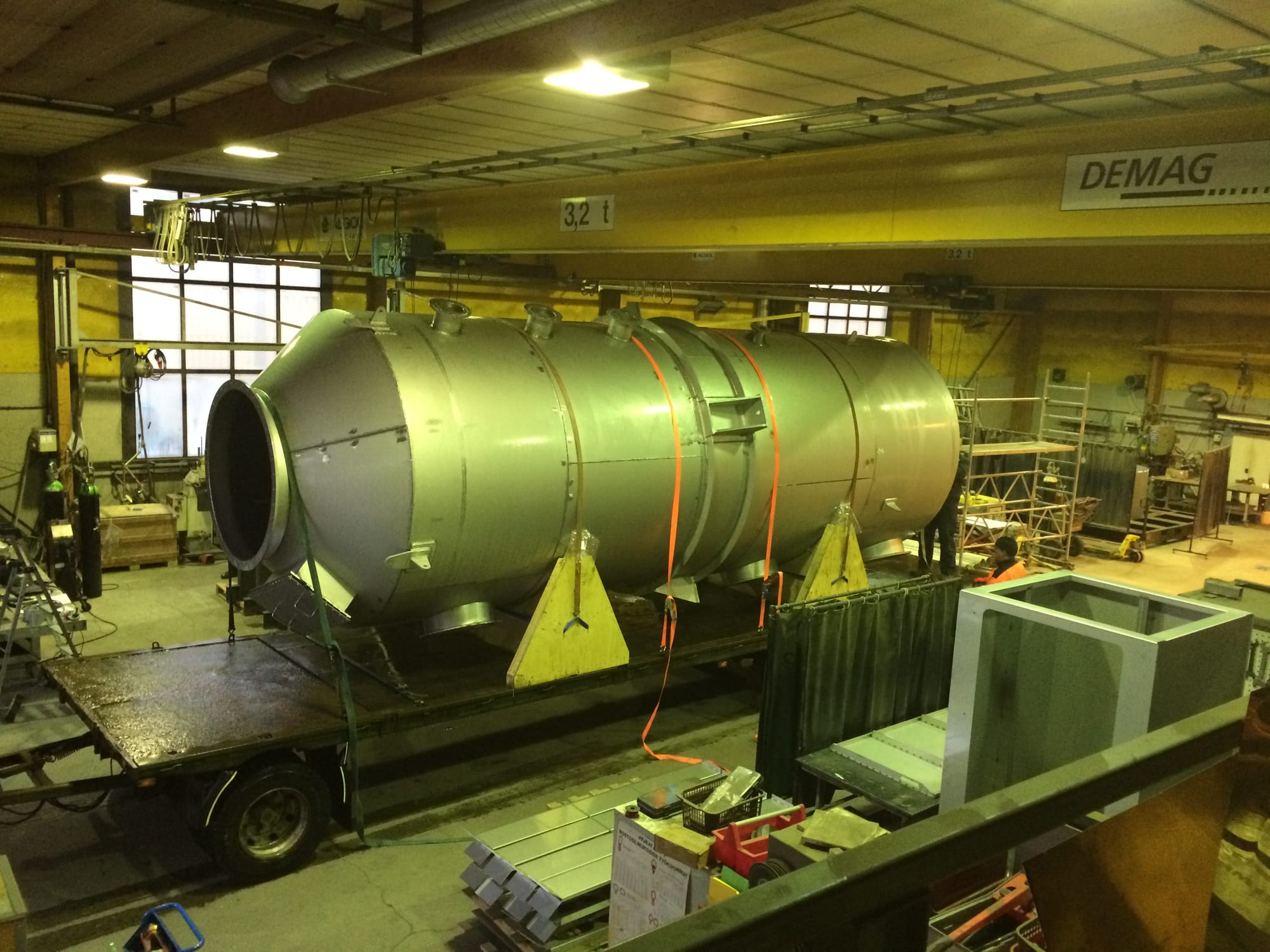Marine Scrubber

Marine scrubber Scrubbers, or the technical term, exhaust gas cleaning systems (EGCS), or SOx scrubbers are used to remove harmful elements from exhaust gases. With strict rules starting in 2020, ships are implementing exhaust scrubber systems geared towards reducing sulfur.
In October 2008, the Marine Environment Protection Committee (MEPC) of the International Maritime Organization (IMO) adopted revisions to the international regulations for the prevention of air pollution from ships (MARPOL Annex VI).
IMO 2020, Consistent Implementation of MARPOL ANNEX VI,
2019 Edition, A book was published by IMO
Known as “IMO 2020”, the rule limits the sulphur in the fuel oil used on board ships operating outside designated emission control areas to 0.50% m/m (mass by mass) - a significant reduction from the previous limit of 3.5%.
Why?
By cutting sulfur oxide emissions, will make an impact on our environment and improve our overall health.
The enforced rules will help cut sulfur emissions that could prevent 150,000 premature deaths and millions of childhood asthma cases every year due to pollution especially on populations living close to ports
How Industry can Comply with the Mandated IMO 2020-Reduction SOx Emission?
The shipping industry can switch to use
- A compliant fuel with lower Sulfur content
or
- An alternative fuel (e.g. LNG, Methanol)
or
- Clean its exhaust gases with a "scrubber" technology to reduce the output of SOx through emissions.
What are Scrubbers on Marine Vessels?
- How Do Exhaust Gas Cleaning Systems Work?
- Types of Marine Scrubbers for Use
- Pros and Cons of Implementing Scrubbers on Marine Vessels
- Scrubber Technology Market Outlook
1. What are Scrubbers on Marine Vessels? Why the Shipping Industry Need It?
Scrubbers, or the technical term, exhaust gas cleaning systems (EGCS), or SOx scrubbers are used to remove harmful elements and air pollutants from exhaust gases.
With MARPOL VI being implemented Since 2020 Shipping Industry is geared towards reducing SOx emissions from the ships.
How will the shipping industry complying?
1. By Using cleaner fuel
or
2. By retrofitting the ship's machinery with a scrubber system.
or
3. By fitting an exhaust gas cleaning system that will reduce the
sulfur content from 3.5% to 0.5%.
It is expected that some 5,000 vessels will be scrubber-equipped by 2026.
How Do Exhaust Gas Cleaning Systems Work?
Scrubbers are used by ship operators globally.
There are three types of exhaust gas scrubbers (EGS):
1. Open-Loop,
2. Closed-loop,
3. Hybrid
In a scrubber, "the sulfur oxides in the exhaust are passed through a water stream reacting with it to form sulfuric acid and are removed from the exhaust gas which then passes out of the system."
As an engine on a ship operates, it creates exhaust gases. Prior to the use of scrubbers on a ship, the exhaust would go directly into the atmosphere.
Now with a scrubber, sulfur oxide is removed as the exhaust moves through a scrubber tower.
In the "scrubber wash water removes and converts sulfur oxides from the exhaust gases, so they are discharged in the wash water as harmless sulfate." These discharges are constantly monitored and subject to the IMO limits.
OPERATION & COMPONENTS OF A SCRUBBER
Most of the wet scrubbers operate with three basic components:
1. A vessel (scrubber vessel combines exhaust steam with water, either sea or freshwater)
2. A treatment plant (removes the pollutants from the wash water)
3. Sludge handling facilities (collects the excess sulfur to dispose of later)
Some scrubbers do not use water and we discuss the different categories in more detail in the next section.
Types of Marine Scrubbers for Use Scrubbers enable ships to use less expensive and a higher sulfur fuel while maintaining the emission standards set by IMO-2020.
EGCS come in a variety of designs with two different classifications of scrubbers,
i) Wet scrubbers, and
ii) Dry scrubbers.
From there scrubbers can be categorized into:
- Open-loop EGS - takes in seawater for the cleaning process
- Closed-loop EGS - uses freshwater treated with alkaline chemicals
- Hybrid EGS - can operate with sea or freshwater

Wet scrubbers are more common and acknowledged as being the most efficient.
Below we compared the differences in a wet scrubber versus a dry scrubber. The choice of scrubber system to be installed on a ship can depend on the space available, area of operation, power of the engine, availability of freshwater, and more.

All types of scrubbers are allowed under IMO rules as long as they achieve the proper level of emissions.
Pros and Cons of Implementing Scrubbers on Marine Vessels Technology comes with advantages and drawbacks.
The IMO notes five beneficial key changes from IMO's Sulfur limit.
1. Cleaner air due to sulfur oxide reduction
2. Positive impacts on human health
3. Higher quality fuels to meet IMO 2020
4. Enhanced preparedness for ship operators, owners, and refineries
5. Ships will be monitored by authorities for compliance.
Disadvantage of Scrubber Technology
- Expensive to install (costly upfront investment than other options)
- Ship could be inactive while the installation occurs (Ship managers are currently quoting around six weeks in dry-dock for the retrofitting of a scrubber system)
- Scrubbers do not remove NOx, CO2
- Potential disposal issues
Conclusion The shipping industry will become more environmentally friendly by implementation of MARPOL VI regulation.
(This article is published for educational & learning purpose)


